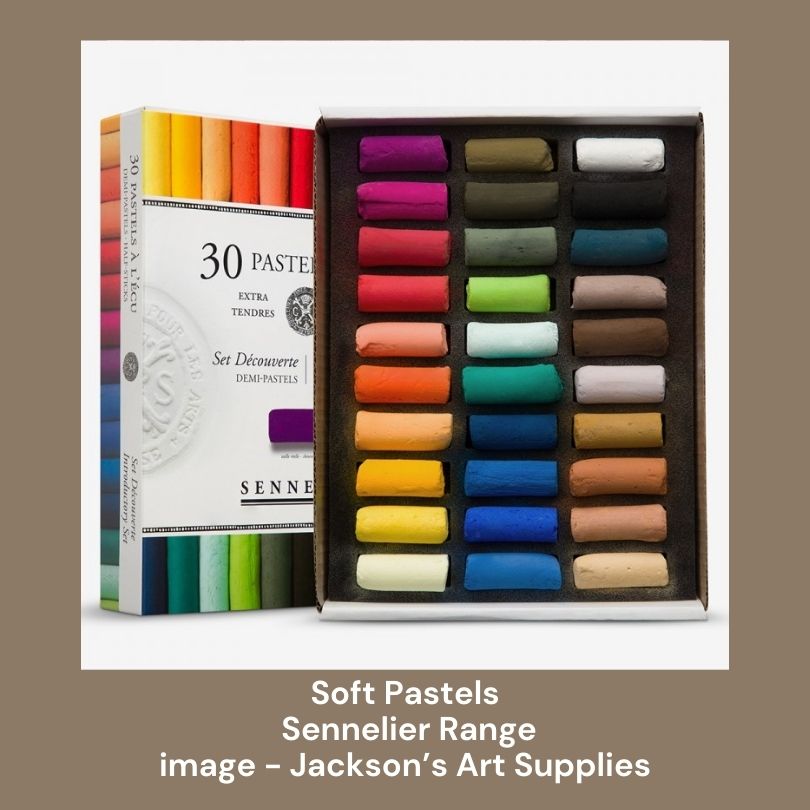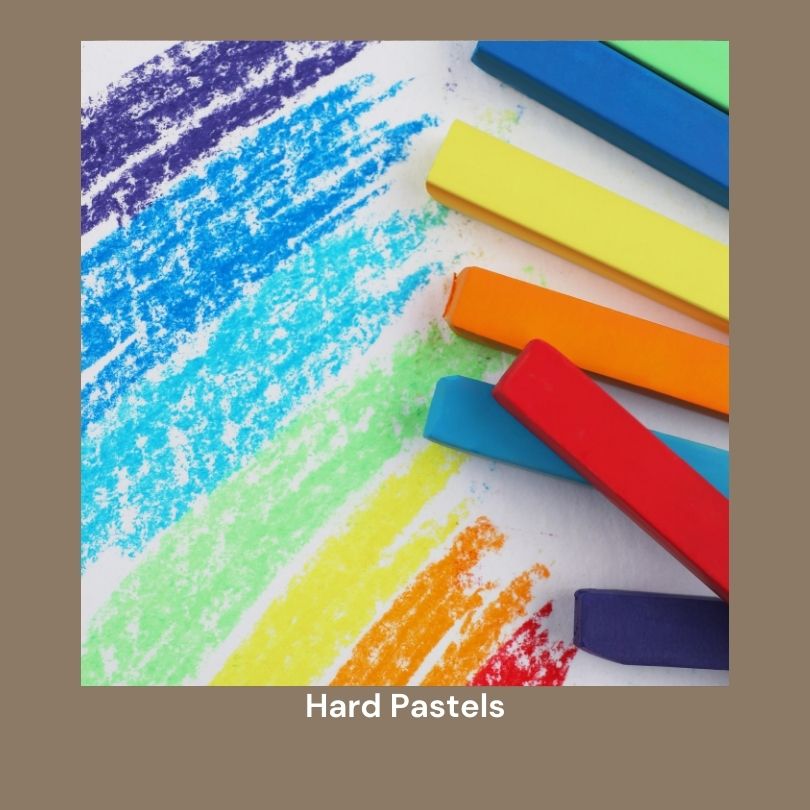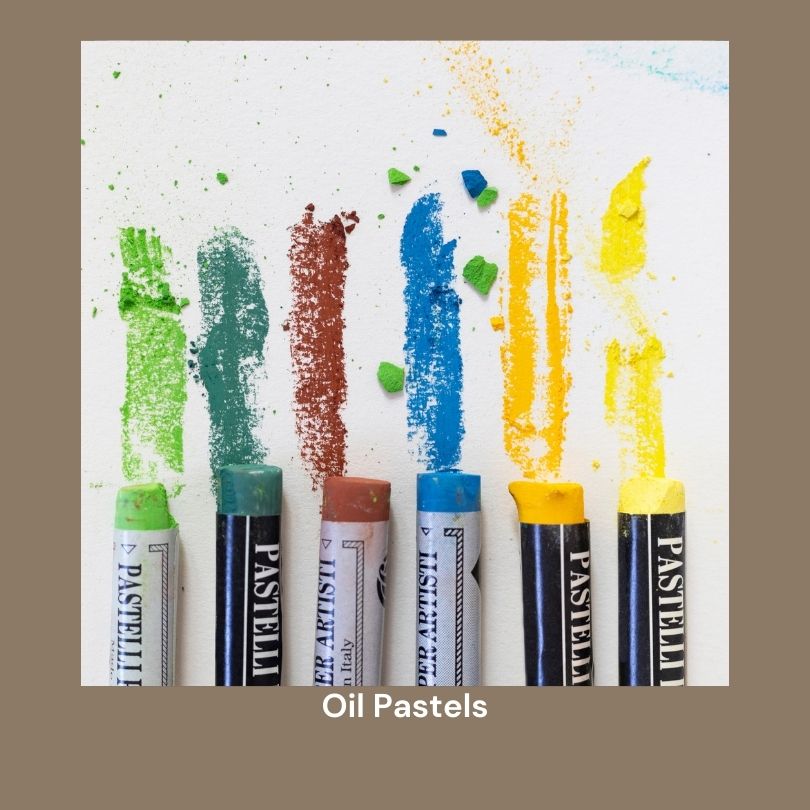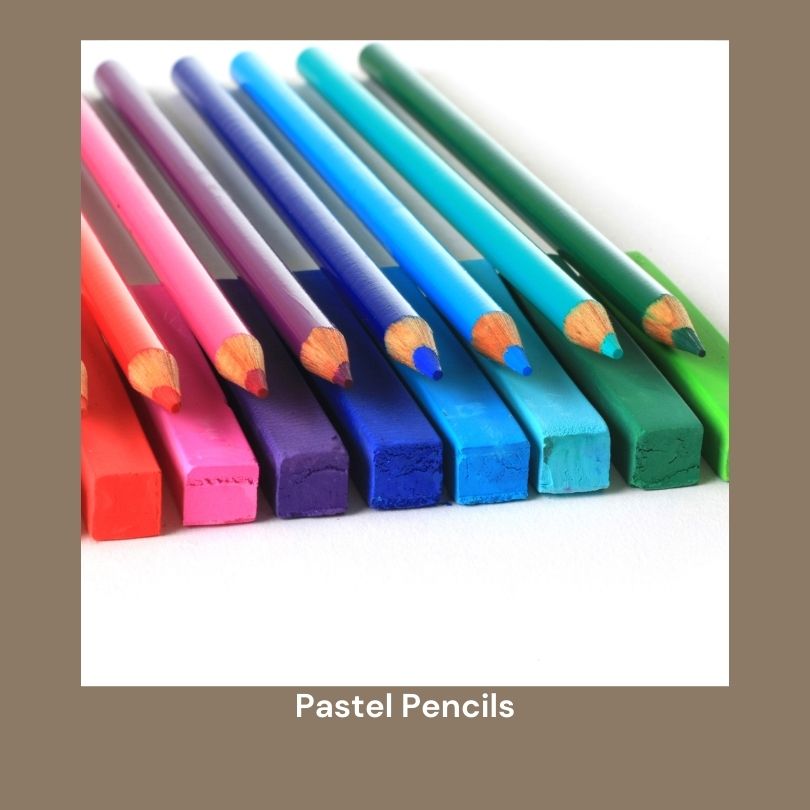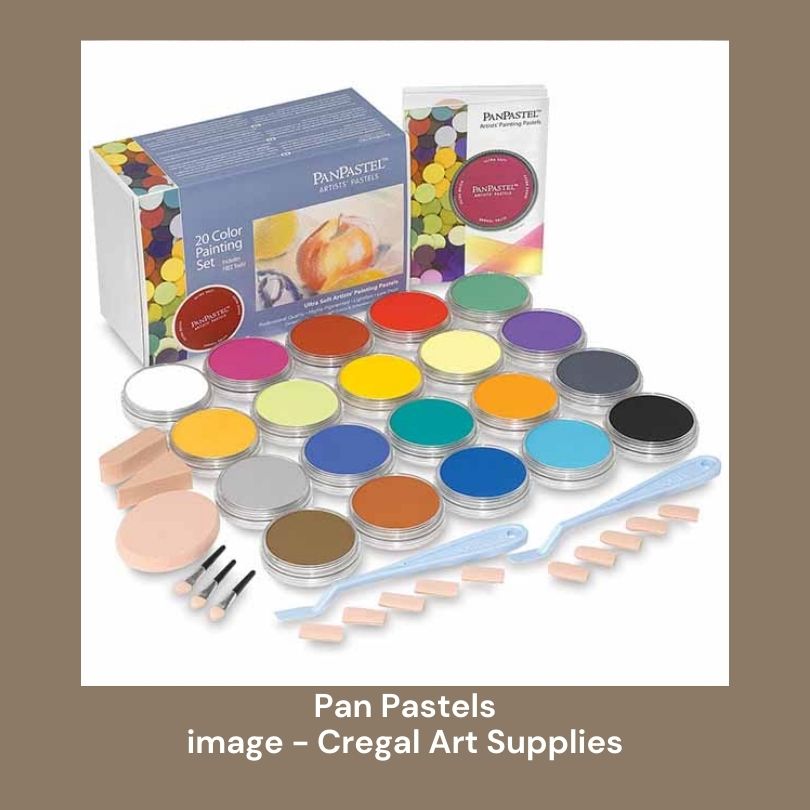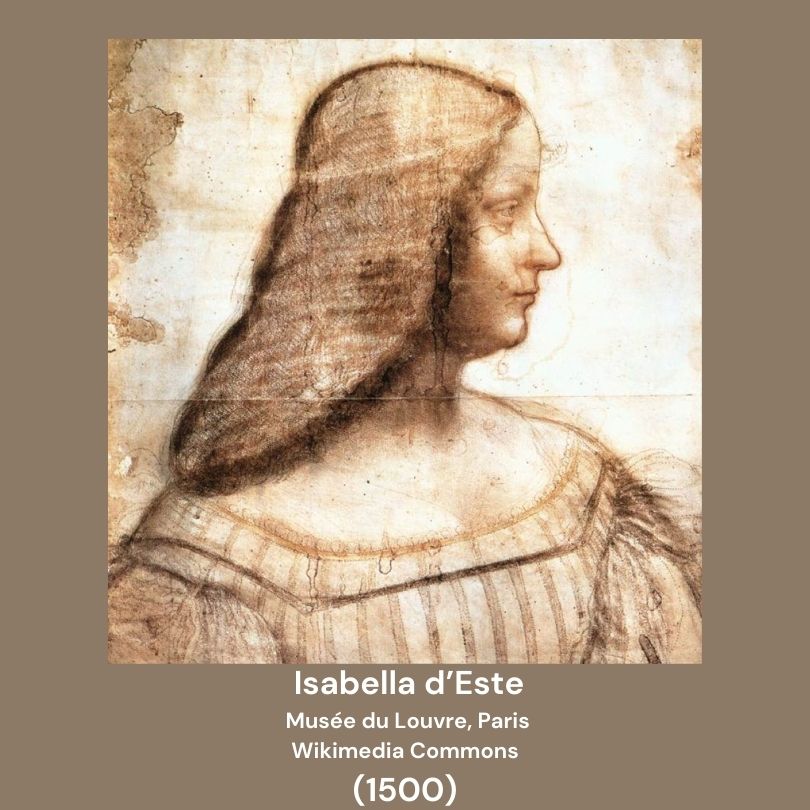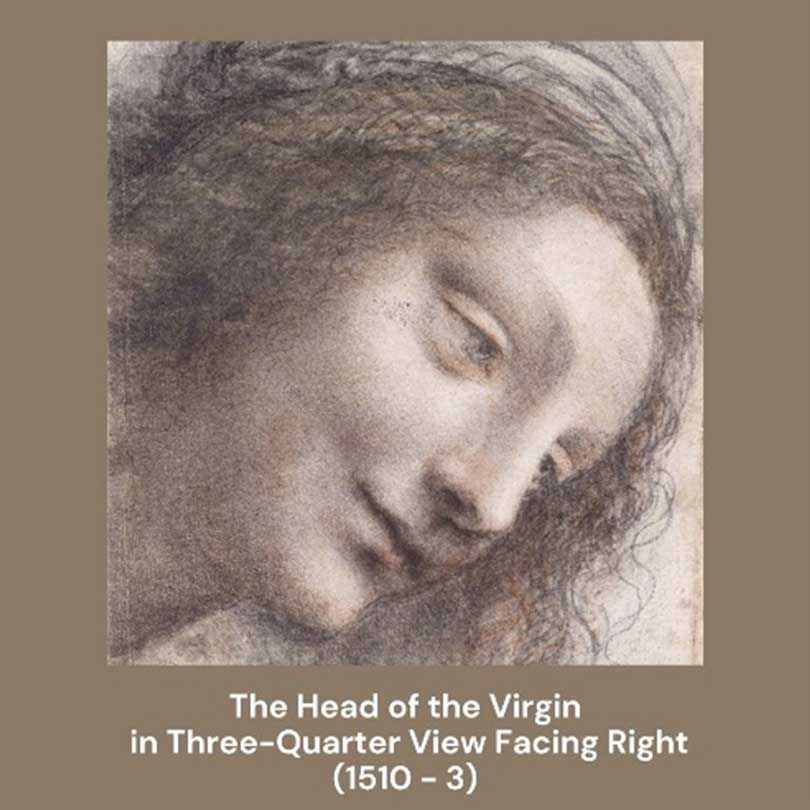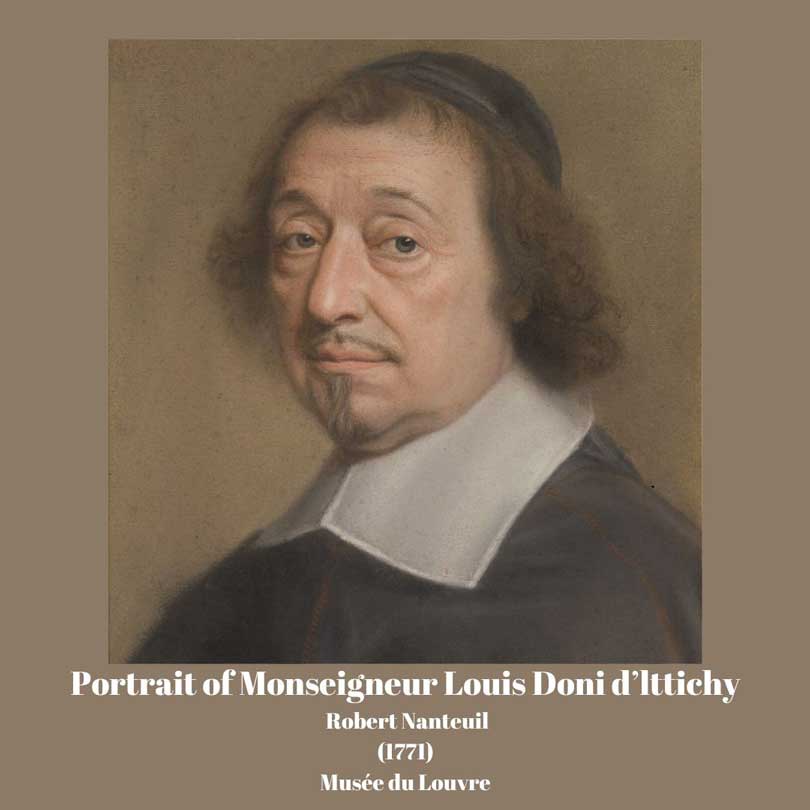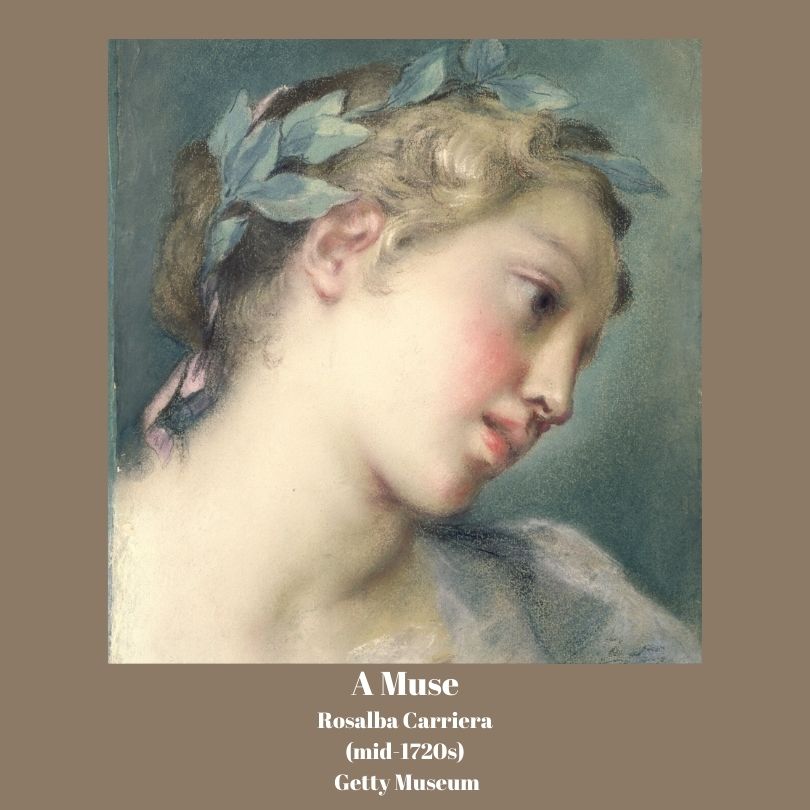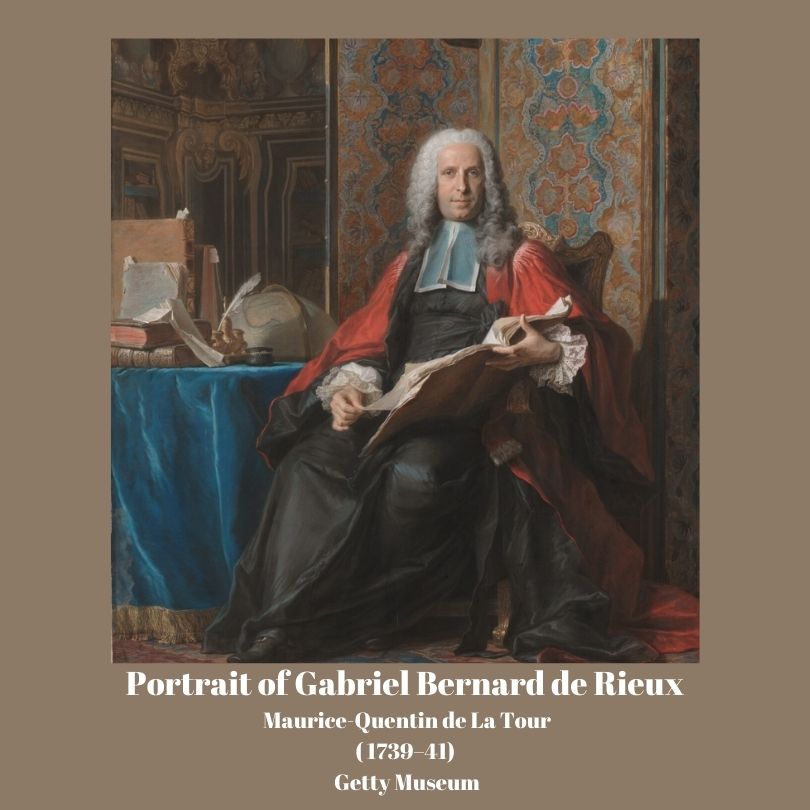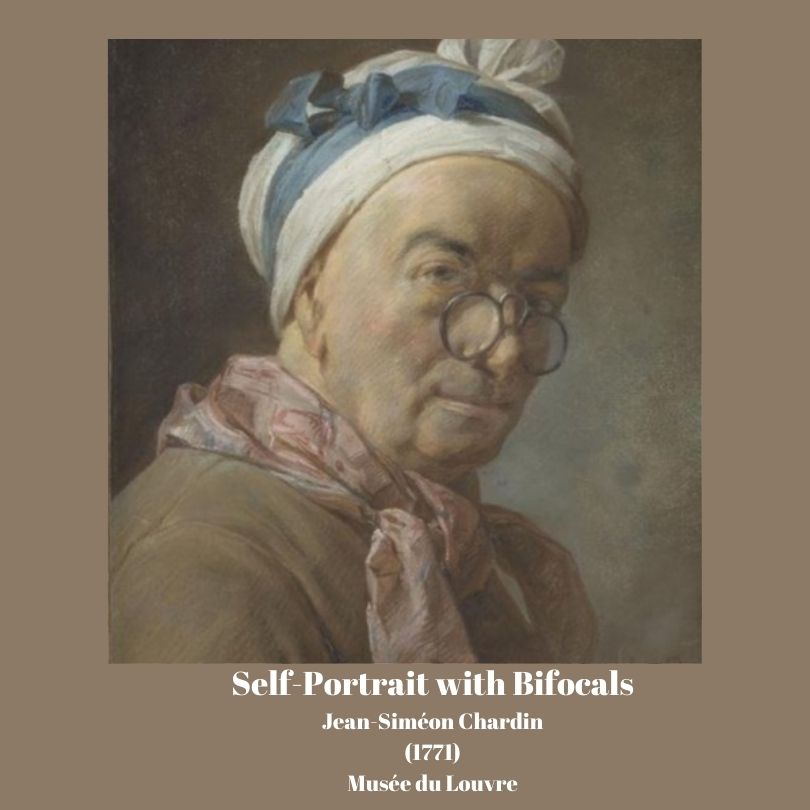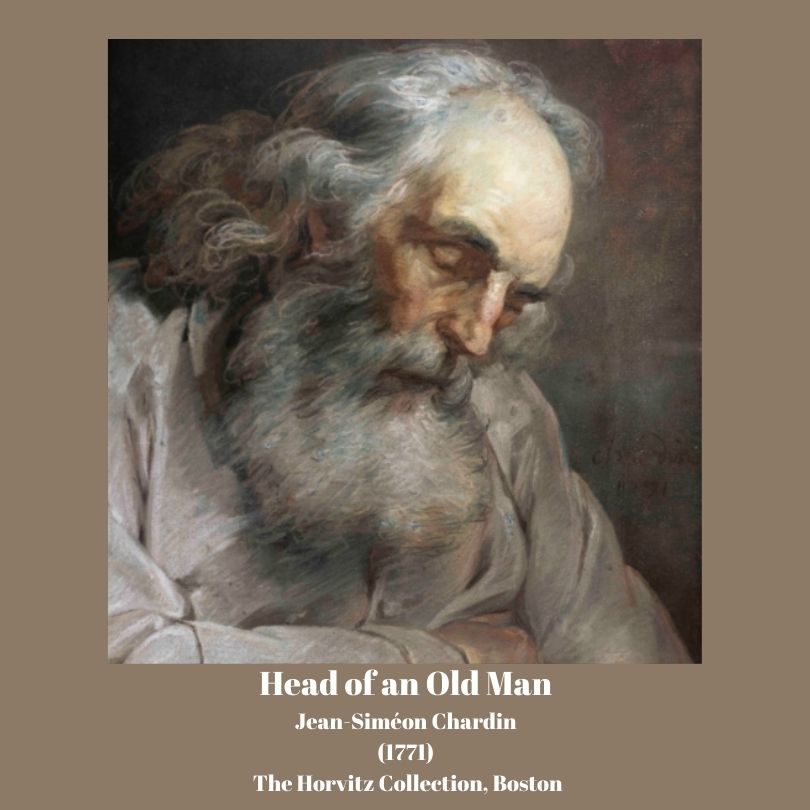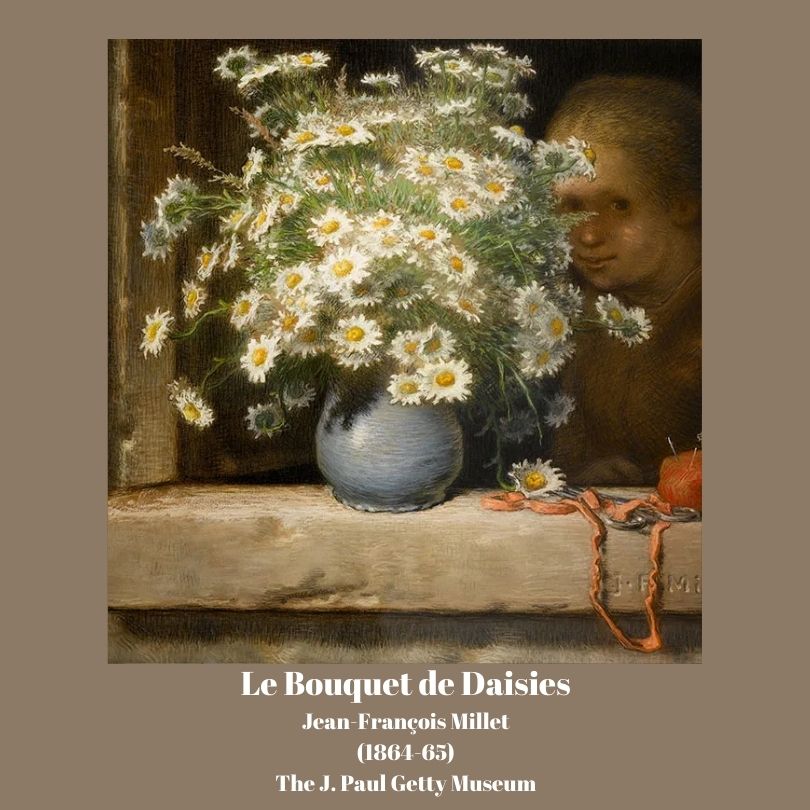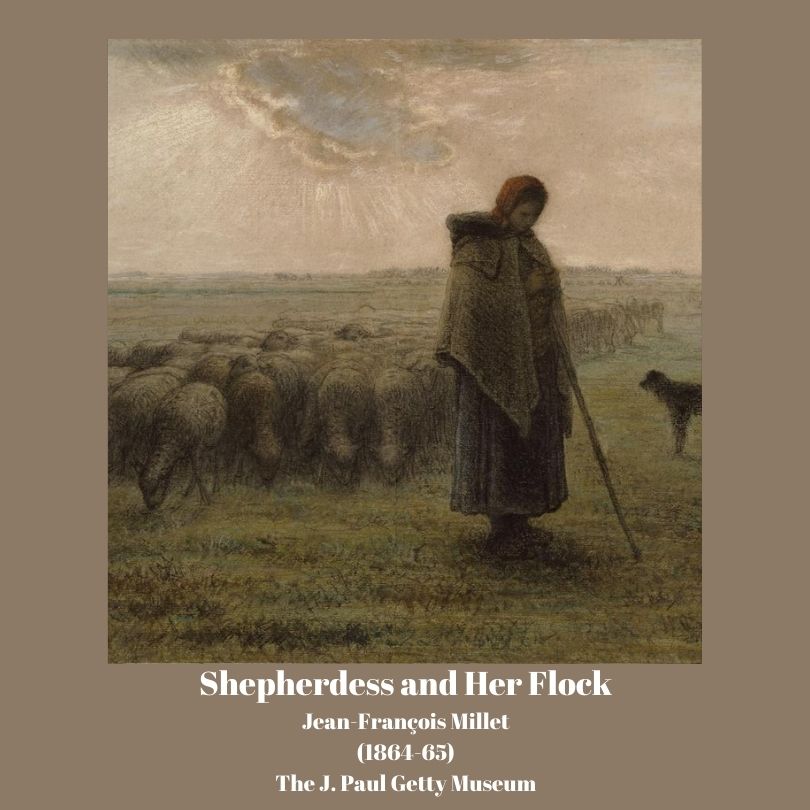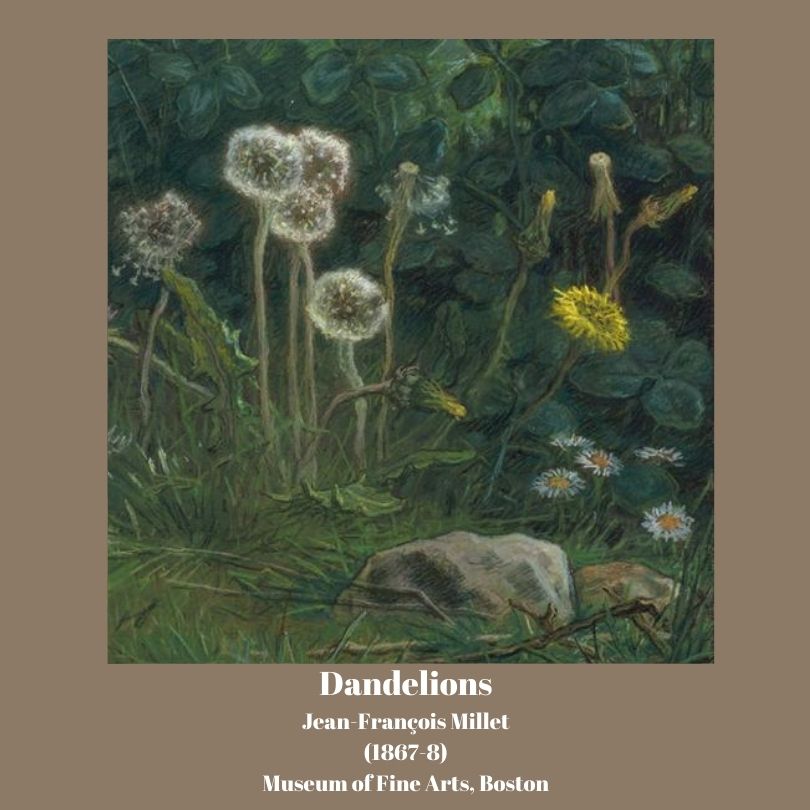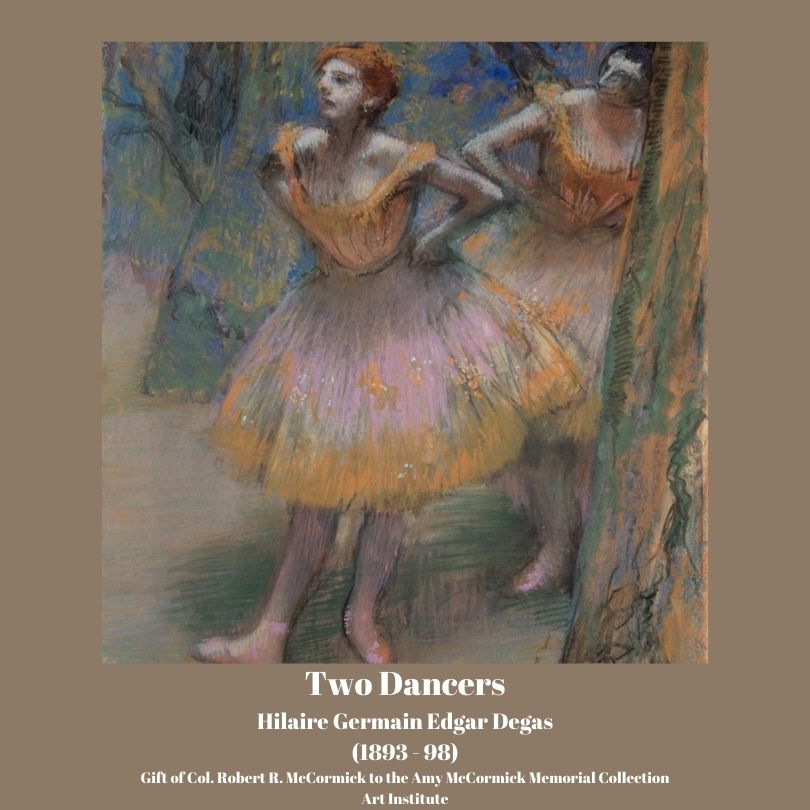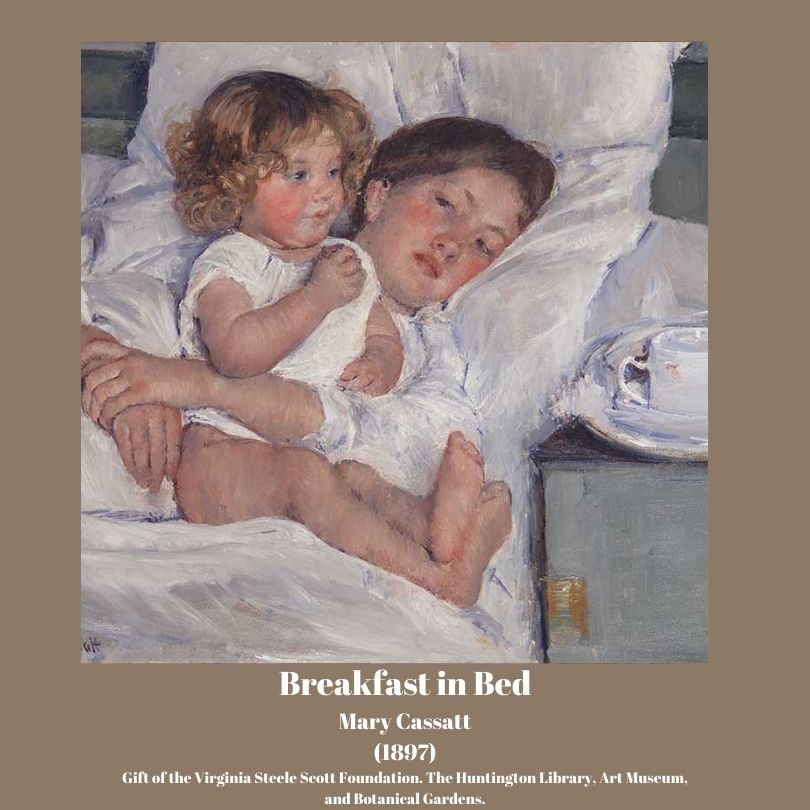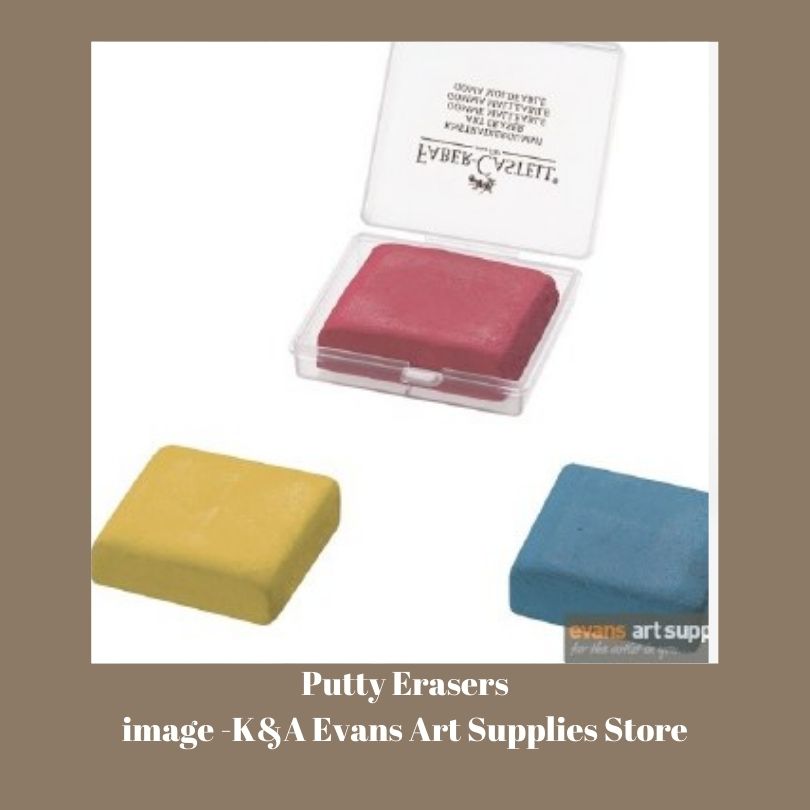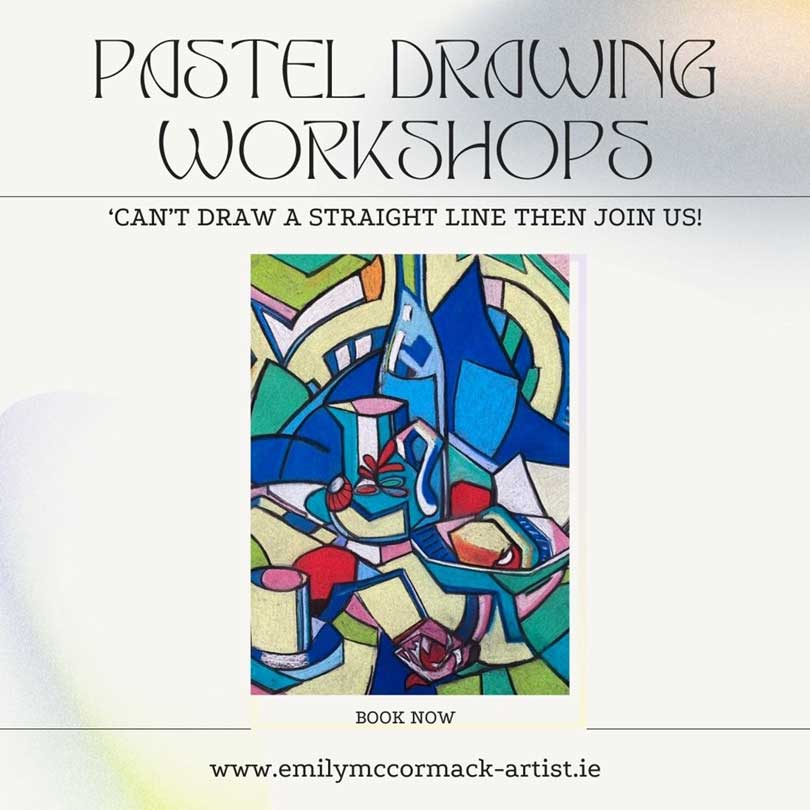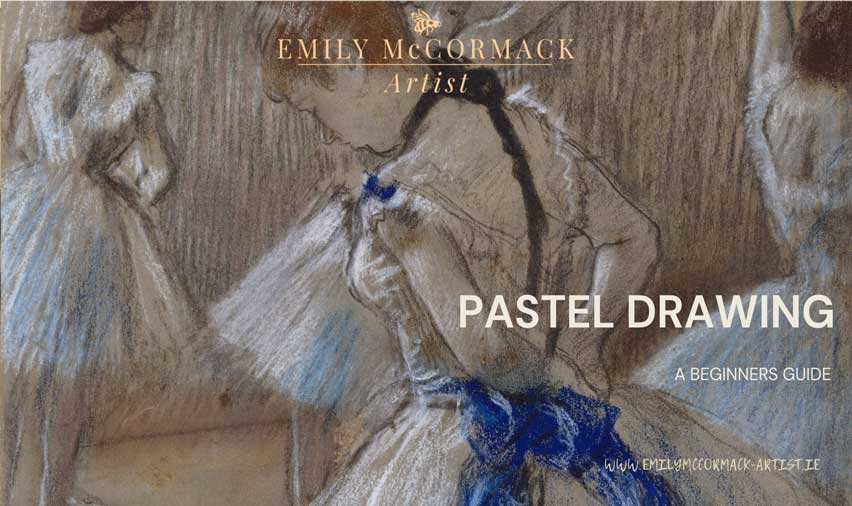
Welcome to this month’s blog on Pastel Drawing – A Beginner’s Guide. *
This Pastel Blog is to coincide with our new pastel drawing workshops we introduced before Christmas. They are half-day workshops, with all materials supplied for the session and they will take place once a month, usually the first week of the month. No previous sketching or drawing experience is required, just come and join us and we will guide you step by step through each drawing.
Introduction – What Are Pastels?
Pastels are a fantastic drawing and painting medium. They come in three main forms, Soft, Hard and Oil. But you can also get pastel pencils and pan pastels which are pastels in a cake like form which are supplied in shallow tins and applied with sponges and brushes.
They are all made from finely ground / powdered raw pigment.
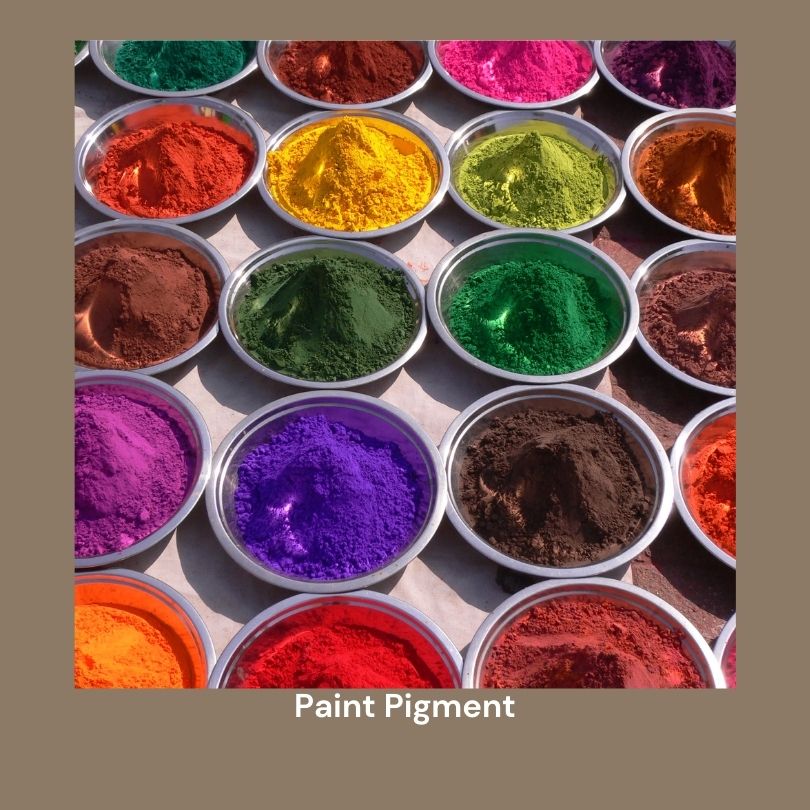
The only difference between them is the binder. In Soft and Hard Pastels gum is used. Whereas, in Oil Pastels, waxes and/or animal fat are used. Additionally, the difference between Soft and Hard pastels, is just the amount of binder used, hard pastels typically contain more binder.
Fillers can also be added to bulk up the medium and white extenders such as talc or kaolin are proportionally added to create ‘tints’ which are gradations in colour from dark to light.
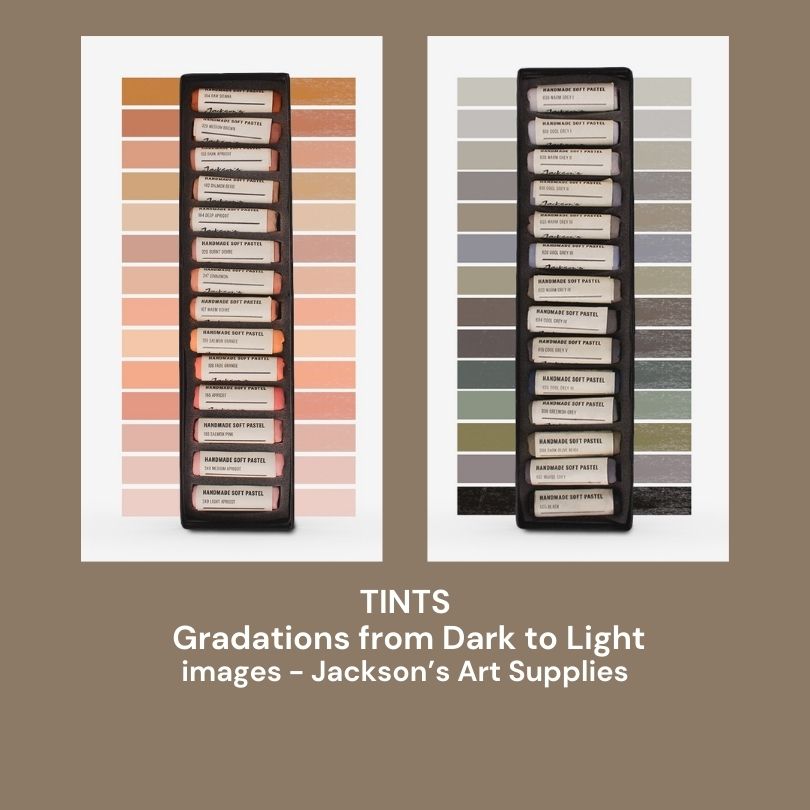
They come in two grades, student and artist / professional. The student grade is usually much cheaper as it will contain less pure pigment, more fillers and tend to last a little longer as they are not as crumbly. Good student brands include Faber Castel, Inscribe and Jacksons and good artist / professional quality brands include Rembrandt, Unison, Schmincke, Sennelier, Terry Ludwig, Art Spectrum and Richardson.
A Little History
The first documented inventor of pastels was Leonardo da Vinci (1451-1510). It’s not 100% certain, but it’s now viewed that between 1493 and 1499, he was on a quest to be able to draw with dry colour.
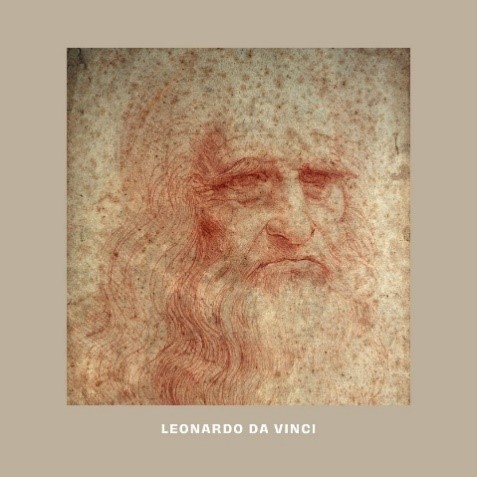
In 1495, he notes in his Codex Altanticus of his intention ‘to get the way to draw with dry colour’ from Jeahan De Paris (Jean Perréal),[1] King Louis XII’s royal court painter, who at the time was working in red, white and black chalk on paper, to record, on the spot drawings, as King Louis’s war campaign made its way through Italy. Leonardo, eventually got his wish in 1499 when King Louis invaded Milan, where Leonardo, was at the time, artist in residence at the court of the Duke of Milan.[2]
Prior to this, however, in earlier documents, the Codex Madrid 1, he mentions ‘pasteli’ or pastello (paste in Italian) and describes a mould for making pastel sticks and in his Codex Forster he provides a recipe for making these pastel sticks:- [3]
“…[mix] … with a little wax and it will not rub off, a wax that will dissolve with water…the distilled water will evaporate in steam and only the wax will remain…the colours must be ground …’ [4]
Between the 16th and 18th Century, Pastel, drawing or painting, had become an extremely popular medium, even more so when it was being commercially manufactured and distributed and ‘merchants expanded their range of colours, tints and shades to fulfil the needs of the portrait painters highly modulated flesh tone palette…and new binders, fixatives and paper with fine tooth were introduced.’ [5]
However, by the mid-nineteenth century, pastel drawing had fallen out of fashion [6] and didn’t see a revival until Jean Francois Millet and his followers made it popular once again.
Then, when the impressionists, in particular Edgar Degas and Mary Cassett began to utilise and develop the medium, it was forevermore, a medium loved and embraced by every generation thereafter.
Additional Accessories for Pastel Drawing
Paper
When it comes to pastels, you can pretty much use them on anything to draw on, including, drawing / cartwright / sugar and watercolour paper, actual pastel paper of various colours, weights and texture, pastel boards, sanded pastel paper, gesso primed boards / canvas and hessian and calico fabric. Popular brands of paper / board include Sennelier, Ingres, Ampersand Pastel board, Pastelmate, Fabriano and Daler Rowney Murano.
Blending Stumps/Stomps
Blending stomps are tightly woven paper to form a pencil like shape that can be used for blending pastels. If the stomp has only one pointed end it’s called a Tortillon, which can be used for more detailed work as the paper used is harder than in a stomp which tends to be more velvetier in touch.
They come in various sizes / widths, normally #1 – #6. You can sharpen the ends with sandpaper which is usually sold in the art store and clean the tips with a putty rubber or just use a new one as they are quite inexpensive.
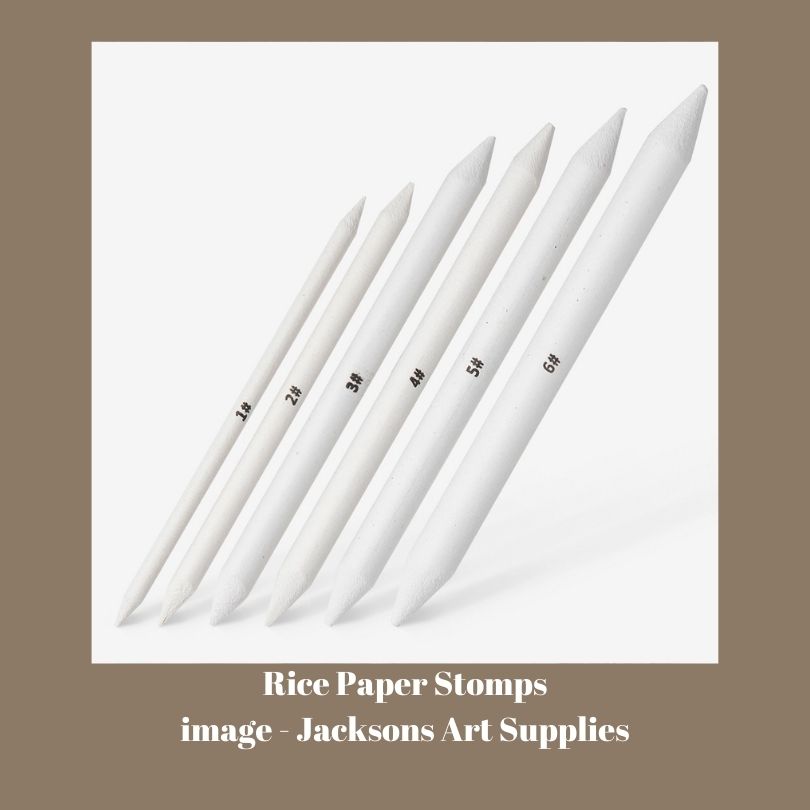
Erasers
I find putty rubbers to be the best, they can sometimes be hard to find. The Faber Castell brand come in a little plastic case to prevent them drying out and you can tear off little pieces as you need them. You can also use the corner of a piece of kitchen paper but test it before using on your drawing as different grades can have different results. If you would like to further explore the various uses and types of erasers on the market, Jacksons Art Supply store in the UK has a very good article on Comparing Erasers.
Sharpeners
If you need to sharpen your pastels, care needs to be taken, especially if the pastel is very soft, but you can use sandpaper or craft knife/scalpel. Also, for your pastel pencils which can also be quite fragile Derwent pastel pencil sharpeners come highly recommended.
Fixatives
The jury is out on the question to use or not use fixatives. They usually come in a spray can and are applied to the final finished painting/drawing to help keep it in place, as pastels can have a high dust transference. They can also be applied to the various layers as the painting is being built up. Some say they can dull or change the intensity of the colours. If you are using them, make sure you have a mask and are spraying them in a well-ventilated room. Typical brands included Sennelier, Spectra fix, Finalfix, Lascaux, Schmincke and Jacksons.
Boxes
As your collection builds up it’s very handy to have storage boxes for your pastels to protect and keep them clean.
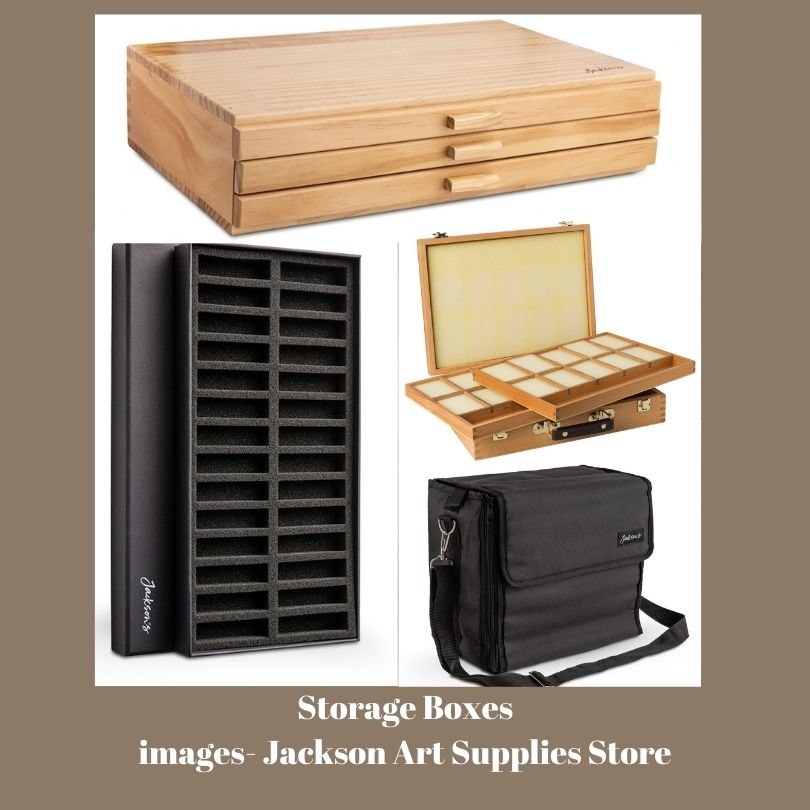
Storing Drawings
We will look at storing and framing your pastel drawings in another blog, however, a lot of pastel artists keep their drawings in between sheets of Glassine or acid-free tissue and then sheets of strong cardboard to keep them flat. You can use pocket folders which are okay, however, the drawings can smudge as you insert and/or remove them.
Conclusion
I hope that this blog, has inspired you to take up pastel drawing this year. To get started you don’t need a whole ton of supplies just a small pack of pastels, a few sheets of sugar paper and perhaps a putty rubber or a piece of kitchen paper. A few books that might help inspire you, and ones I like to flick through include: –
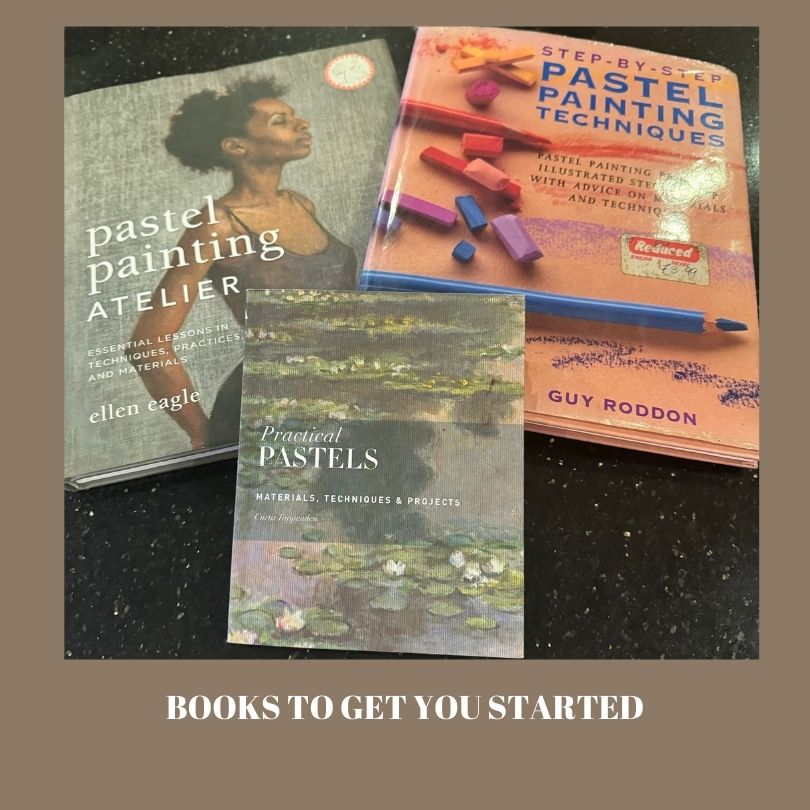
If you would like to join us here at the studio for a pastel workshop, we run half-day workshops throughout the year.
[7]
Until next month, when we will resume our journey into the world of oil painting, we wish you nothing but the very best of wishes for 2024!!!
Emily
January 2024
* As always, I am not affiliated with any brands, stores, or persons I may or may not mention and your use of any of these products, links and the like are your own risk and it’s up to you to do your research/homework before you use them. This is just my opinion and experience.
[2] Shields, P. Leonardo da Vinci invented pastels, (2019) (ONLINE) https://photographfrance.com/blog/2019/2/4/leonardo-da-vinci-invented-pastels
[3] Jeffares, N. Dictionary of pastellists before 1800 – LEONARDO da Vinci, (Updated 13 July 2022) (ONLINE) http://www.pastellists.com/Articles/LEONARDO.pdf
[4] Shields, P. Leonardo da Vinci invented pastels, (2019) (ONLINE) https://photographfrance.com/blog/2019/2/4/leonardo-da-vinci-invented-pastels
[5] Eagle, E., Pastel Painting Atelier, Essential lessons in techniques, practices, and Materials, WatsonGuptill 2013, p 14 & 16.
[6] Getty Centre, Peasants in Pastel, Millet and the Pastel Revival, 2019-20 (Online) https://www.getty.edu/art/exhibitions/millet_pastels/
[7] Image shown is a little study after Peploe.
Become an insider, subscribe to receive
Stunning previews of new art, discounts, painting tips and early booking for painting workshops.

